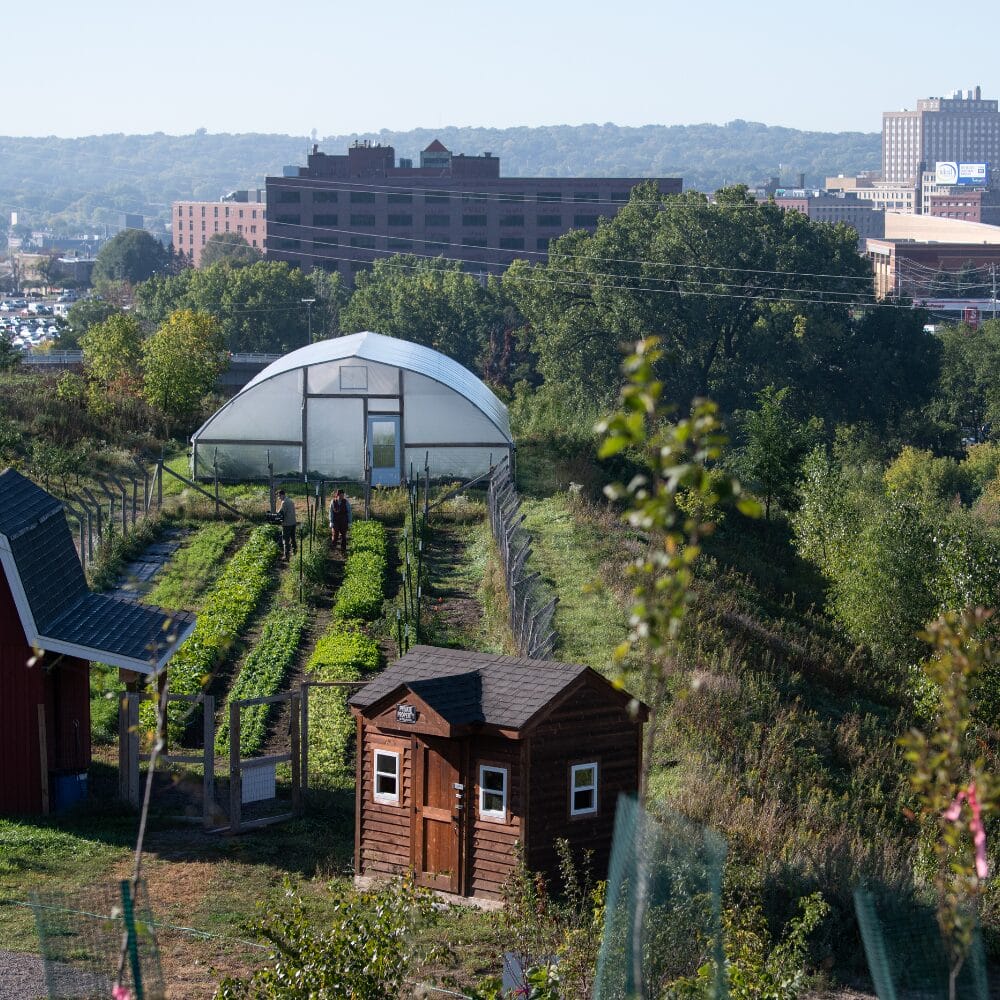By Maria Ridoutt-Orozco, ASU sustainable food systems graduate student

Urban agriculture is an evolving frontier in food policy — one that is reshaping how we think about food access, sustainability, and local economic development. As one of the leaders in the inaugural Model USDA, I had the opportunity to witness students roleplay as various food policy decision-makers for the simulation’s Scenario C: Growing urban agriculture.
The goal of this scenario was to secure the Secretary of Agriculture's approval for a comprehensive urban agriculture strategy. Over three days of negotiation, deliberation, collaboration, and crisis management, I experienced firsthand the challenges of policymaking and the delicate balancing act required to bring competing priorities into alignment.
Day 1: Setting priorities and stakeholder advocacy
The Growing Urban Agriculture scenario of the first-ever Model USDA simulation opened with video remarks from Andy Fisher, founder and former Executive Director of the Community Food Security Coalition, author of Big Hunger, food security activist, NGO consultant, and professor. His remarks led into an engaging forum where more than 30 students, roleplaying as various stakeholders—including academia, government agencies, nonprofits, and advocacy groups—presented their priorities. Among them, we also had some students representing the members of the Urban Agriculture and Innovative Production Advisory Committee (UAIPAC), a real-life entity that provides recommendations to the Secretary of Agriculture to adopt an urban agriculture strategy. The goal was to engage the students representing the UAIPAC to have their priorities included in their recommendations to the Secretary.
What stood out immediately was the level of preparation and collaboration among participants. Most groups shared a common vision of sustainability but approached it from different angles.
Later in the day, I interviewed several students to learn about their role’s priorities. A student roleplaying as the Director of the Institute of Natural Resources at the University of Alaska Fairbanks (UAF) had a clear focus: a successful urban agriculture strategy had to include funding for research and grant programs, particularly those that uplift indigenous knowledge and sustainable practices. Similarly, another student, playing the Executive Director of the U.S. Botanical Gardens, emphasized the need for increased research and program implementation, alongside community outreach and education.
While there was a strong sense of alignment in overarching goals, I noticed a lack of pushback from students roleplaying key public and private sector stakeholders, such as affordable housing agencies and real estate developers. Future iterations of the Model USDA should ensure stronger representation of roles with competing priorities to create a more dynamic policy negotiation.
Day 2: Strategy development and crisis management
With the foundation set, UAIPAC put forth a draft proposal of their recommendation to the Secretary focusing on three key areas: Incentives for Private Partnerships, Incentives for Communities, and Public Awareness campaigns.
Student stakeholders quickly responded with concerns and recommendations. Education, food waste reduction, and equitable distribution of resources emerged as recurring themes. Then, just as the policy negotiations were picking up steam, a simulated crisis hit: Congress passed a new regulation on per- and polyfluoroalkyl substances (PFAs), significantly affecting the viability of urban agriculture projects.
This sudden regulatory shift forced UAIPAC students to pivot quickly. They held an open session to gather stakeholder input, with discussions focusing on two primary areas: education and land use. However, the fast-paced nature of the simulation meant that not all stakeholders had time to advocate for their positions, leading many to resort to alternative tactics like coalition-building and media engagement to push their priorities to the advisory committee.
Day 3: Final deliberations and approval
As the student-led UAIPAC refined their final strategy, a coalition of students roleplaying as academia, advocacy groups, nonprofits, and government officials coalesced around a set of core recommendations: provide a clear definition of urban farming, more guidance on food waste and distribution strategies, and financial incentives to support urban farmers.
One of the most effective advocacy efforts came from an unusual coalition — students roleplaying extension agents partnering with private industry leaders. This unexpected alliance helped broaden support for certain provisions, such as tax incentives and training programs.
UAIPAC students did an impressive job of integrating much of this stakeholder input. When the proposal finally reached the student roleplaying as the Secretary of Agriculture, the response was largely positive, but it came with several pointed recommendations. UAIPAC students responded swiftly, incorporating the Secretary’s feedback and achieving the main goal of the simulation: gain the Secretary’s approval on the recommended urban ag strategy.
Reflections: What Model USDA accomplished
This simulation was more than just a policy exercise; it was an invaluable crash course in the art of negotiation, coalition-building, and adaptive leadership. A few key takeaways stood out:
- The Power of Multi-Stakeholder Collaboration – While interests sometimes diverged, the most effective moments occurred when unlikely partnerships formed to push forward shared priorities.
- The Importance of Policy Agility – The simulated PFAs crisis underscored the need for adaptable policy frameworks that can withstand regulatory shocks.
- Time Constraints and Strategic Advocacy – Many stakeholders struggled with limited time, forcing them to think creatively about how to make their voices heard.
Being part of the first Model USDA simulation in the Growing Urban Agriculture scenario was a fascinating and rewarding experience. It deepened my understanding of urban agriculture’s complexities and provided an inside look at the pressures policymakers face in real-time decision-making. More importantly, our feedback and experiences will help refine this program for future participants, ensuring that the next iterations of Model USDA are even more impactful.
For those students participating in future Model USDA simulations — it’s an unparalleled opportunity to sharpen your policy skills, build lasting connections, and directly engage with the pressing food challenges of our time. As I continue my journey in food policy, this experience will undoubtedly inform my approach to driving sustainable, inclusive solutions in the agricultural sector.
This blog is part of a series written by ASU graduate students who role-played as journalists in the Swette Center's inaugural Model USDA, held virtually from January 31 to February 2, 2025.